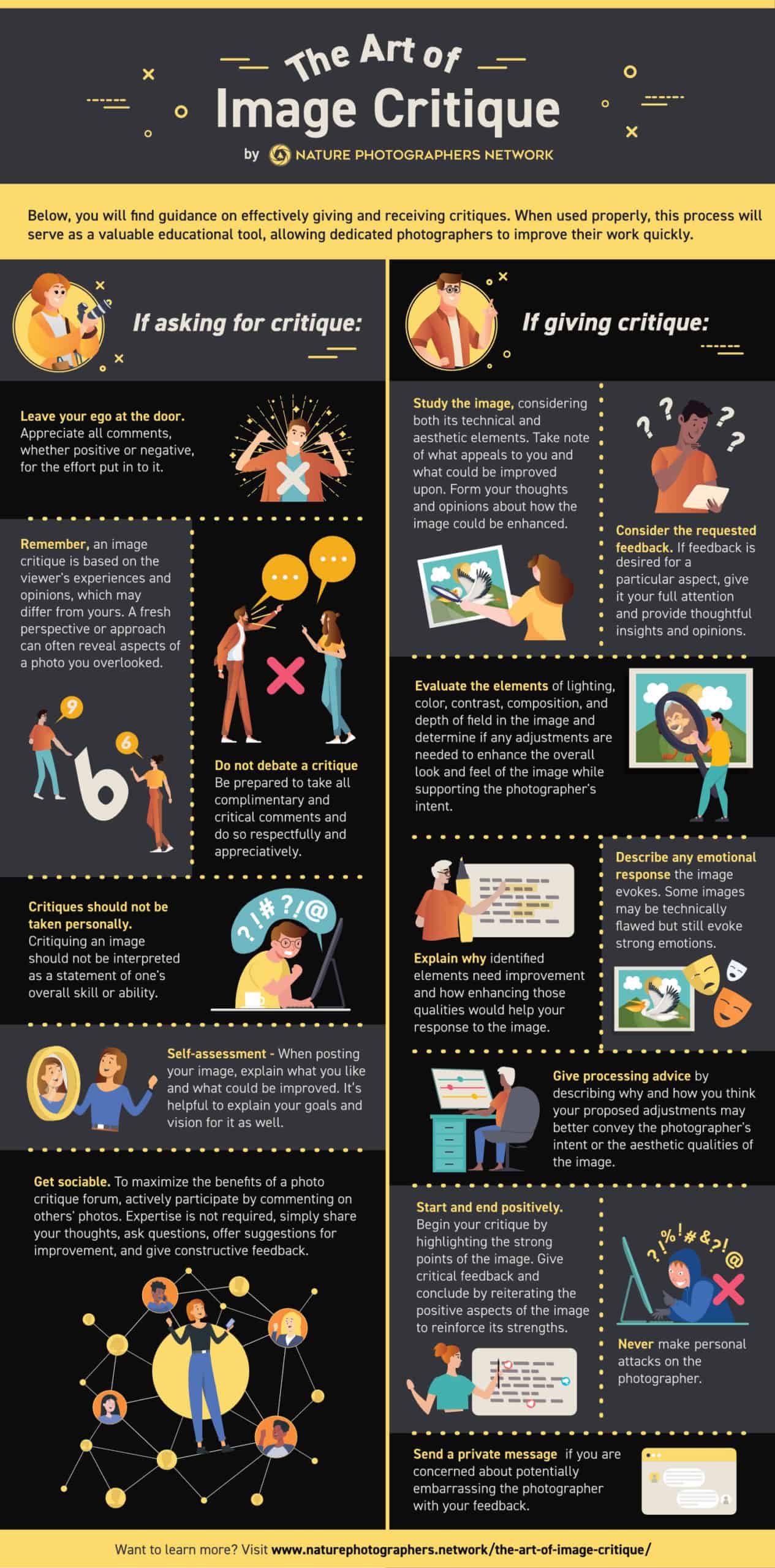🖼️ Harnessing the Power of NPN Image Critiques
Engaging with the NPN image critique galleries presents a golden opportunity. Through the lens of fellow nature photographers, you receive feedback on your images. Done right, this becomes a potent tool for growth, elevating your photography in no time. This guide lays out how to tap into this treasure trove.
📸 Understanding Critiques in Nature Photography
When we step back and look at nature, it’s not just about capturing a fleeting moment or the way sunlight filters through the leaves 🍃. It’s about translating a personal experience into a visual story. And like any story, feedback can help refine and improve our narrative.
- Why Critiques Matter: 🤔 Critiques aren’t just about pointing out what’s “wrong” in a photograph. They are collaborative sessions, designed to help us see our work through fresh eyes. Think of them as having a seasoned hiker 🥾 point out trails you might have missed. It’s an opportunity for growth 🌱, learning, and understanding different perspectives.
- Embracing Different Perspectives: 👓 Remember, each person brings their unique experiences to the table. A scene that feels calm and peaceful to you might evoke feelings of melancholy in someone else. By embracing these varying perspectives, we not only refine our work but also expand our own view of the world 🌍.
- The Art of Receiving: 💬 It’s easy to become defensive when someone offers feedback on our work. After all, our photographs are deeply personal. However, entering a critique with an open heart and mind allows us to see the constructive nuggets amidst the feedback. It’s not about changing your vision but refining it.
- Offering Constructive Feedback: 🗣️ When giving critiques, it’s essential to be both honest and kind. Start with what works in the image, then gently delve into areas of potential improvement. Always frame suggestions as just that—suggestions. In the end, every photographer must find their path 🛤️.
Remember, critiques are a journey 🚀, not a destination. By understanding and embracing this process, we sharpen our skills, enrich our vision, and deepen our connection with the world around us.
📌 If You’re Posting:
When you post an image in NPN’s critique gallery, it undergoes critical evaluation. Essentially, you’re asking for everyone’s two cents. Some might adore your image as it stands, while others might point out areas to tweak. Remember:
- Avoid Debating: 🚫 A critique is a personal opinion. Debating it is counterproductive.
- Seek Clarification: ❓ If a comment isn’t clear, ask the critic to elaborate. But, always be respectful and gracious.
- Stay Objective: 🧘 Critiques assess your image, not your worth or talent as a photographer. Don’t take it to heart.
🖋️ Crafting a Stellar Critique:
Writing a critique is an art. Here’s a blueprint to nail it:
- Study the Image: 🤓 Take your time to absorb the photo. Maybe even revisit it later.
- Spot the Good and Bad: 👍👎 Identify what works and what doesn’t – both technically and aesthetically.
- Evaluate the Elements: 🔍 Dive deep into the components of the image – composition, lighting, color, and subject matter.
- Choose Your Words: 📝 Find phrases that articulate your observations.
- Highlight the Positives: 💖 Start with what you love about the image.
- Address Improvements: 🔧 Discuss areas that need tweaking and suggest ways to enhance them.
- Give Processing Advice: 🎨 Share insights on post-processing techniques that could be beneficial.
🌟 Golden Rules for Everyone:
- Never Make Personal Attacks: 🚫 Always focus on the image, not the individual.
- State Your Intention: 💭 When posting, outline what you aimed to capture and what you feel about the result. This helps reviewers align their feedback.
- No Need for Expertise: 🤷 Even if an image seems flawless, sharing your emotional response is valuable.
- Stay Respectful: 🤝 Don’t challenge another’s critique. Offer your perspective instead.
- Learn and Grow: 🌱 Critiquing educates both the poster and the critic. Engage actively to reap maximum benefits.
🚪 Ego – Check it at the Door:
Posting for the first time can be nerve-wracking. Crave praise? Fear criticism? Remember, feedback – good or bad – propels growth. Treat all opinions objectively and be grateful for the shared insights.
🤐 When Silence Speaks:
No feedback can be disheartening. Often, it means your photo didn’t spark strong feelings either way. It’s neither fabulous nor flawed. So, how to navigate this?
- Engage: 🗣️ Actively comment on others’ work. Sharing why you like or dislike an image can trigger a response for your own.
- Private Messages: 💌 If you’re hesitant about public comments, drop a private message. It’s like a heart-to-heart in a crowded room.

